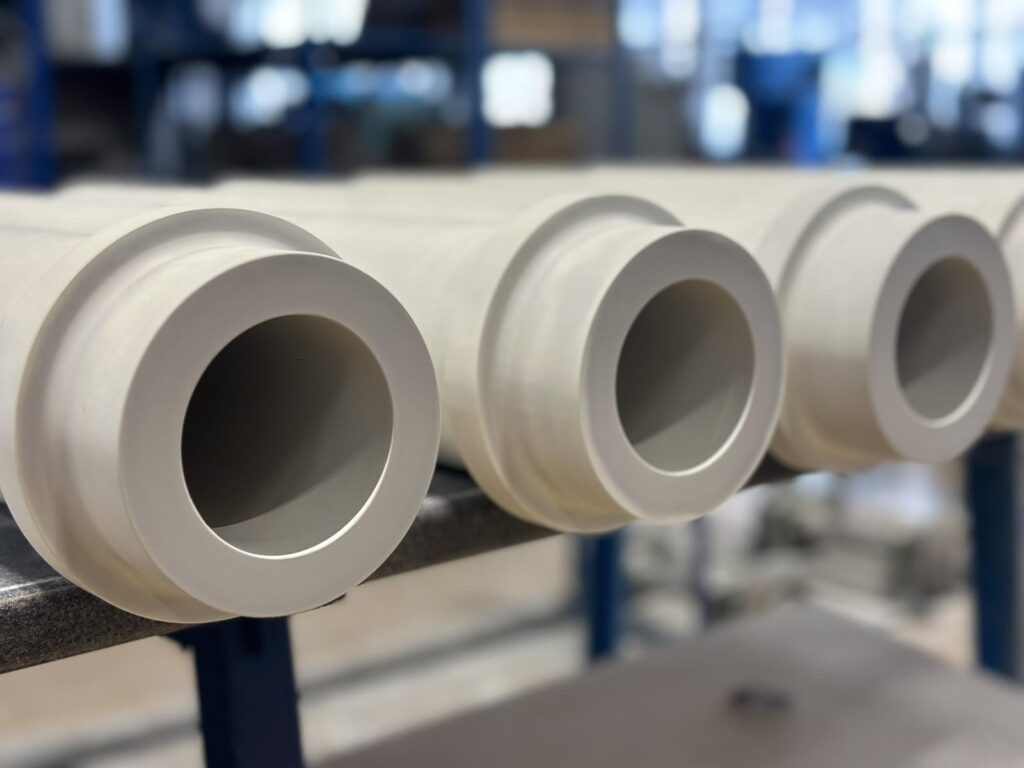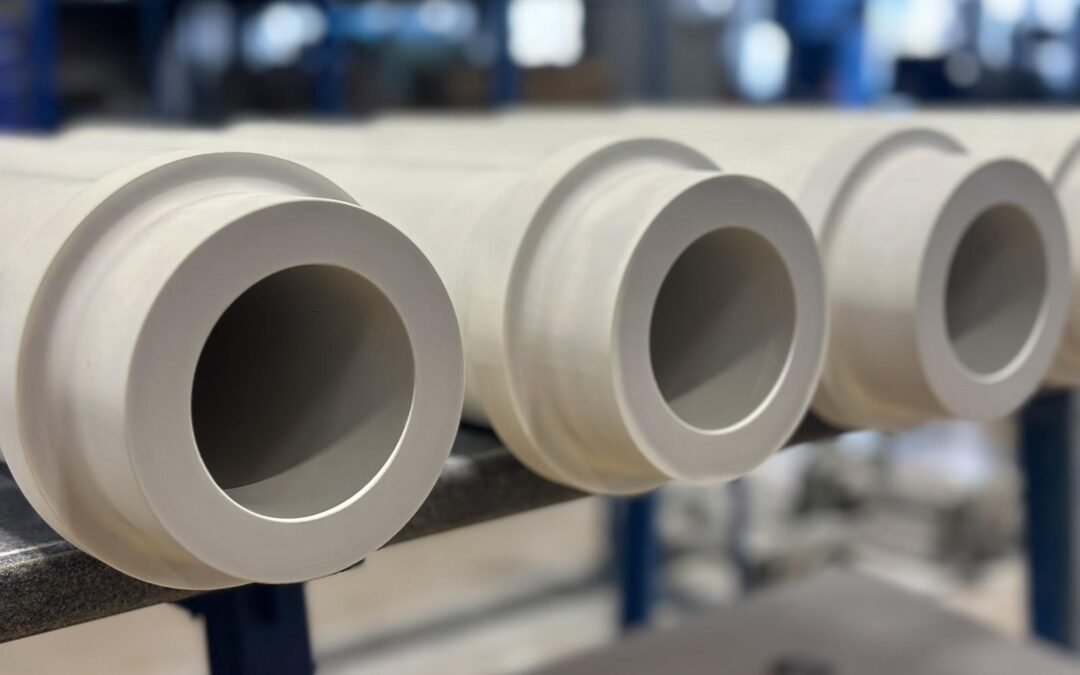Technical ceramics have long played a pivotal role in various industries, from aerospace to
electronics and healthcare. Among the versatile materials in this category, aluminum titanate
stands out for its unique properties and innovation potential. In this comprehensive blog
post, we’ll explore the world of technical ceramics, with a special focus on aluminum titanate,
and discuss the exciting innovations that lie ahead in this field.

Understanding Technical Ceramics
Technical ceramics, also known as advanced ceramics or engineering ceramics, are high-
performance materials known for their exceptional mechanical, thermal, and electrical
properties. They are used in applications where traditional materials like metals or plastics
may fall short. These ceramics are typically formulated from non-metallic, inorganic
compounds, and they can withstand extreme temperatures, corrosive environments, and
mechanical stress.
One of the most intriguing materials in this category is aluminum titanate, a ceramic with a
unique set of characteristics that make it highly desirable for specific applications.
The Wonders of Aluminum Titanate
Aluminum titanate, a compound with the chemical formula Al2TiO5, has gained recognition
for its outstanding properties. It exhibits a low thermal expansion coefficient, excellent
thermal shock resistance, high electrical resistance, and remarkable chemical stability.
These features make aluminum titanate an ideal candidate for a variety of cutting-edge
applications.
- Heat Exchangers: Aluminum titanate’s low thermal expansion coefficient allows it to
withstand rapid temperature changes without cracking. This quality makes it perfect for heat
exchangers in various industries, including automotive and energy production. - Technical Ceramics: Aluminum titanate’s excellent thermal conductivity and electrical
resistance have led to its use in technical ceramics. It serves as an essential material for
manufacturing components like kiln furniture, spark plugs, and crucibles. - Automotive Industry: The automotive sector is constantly seeking ways to improve
engine efficiency and reduce emissions. Aluminum titanate’s resistance to thermal shock
makes it a preferred choice for manufacturing ceramic diesel particulate filters, which help
reduce harmful emissions.
What’s Next in Innovations?
As technology and materials science continue to advance, we can expect exciting
innovations in the world of technical ceramics, particularly aluminum titanate. Here are some
areas where we anticipate growth and development:
- Sustainable Manufacturing: The push for sustainability in manufacturing processes will
likely lead to the development of more eco-friendly methods for producing aluminum titanate
and other technical ceramics. By reducing the environmental impact of production, these
innovations will help industries meet their sustainability goals. - Enhanced Properties: Researchers are working on improving aluminum titanate’s
properties to make it even more versatile in various applications, including high-performance
electronic devices and medical equipment. By fine-tuning its characteristics, we can unlock
new possibilities for this remarkable material. - New Applications: With the unique combination of properties offered by aluminum
titanate, it’s only a matter of time before new and innovative applications emerge, potentially
revolutionizing industries. We may see breakthroughs in fields such as space exploration,
renewable energy, and advanced electronics. - Customization: Tailoring aluminum titanate to meet specific industry needs will be a
focus, with the possibility of creating bespoke solutions for a wide range of applications. This
level of customization will allow companies to optimize their processes and products with
unparalleled precision.
Sustainable Manufacturing in Technical Ceramics
In recent years, sustainability has become a major focus in the manufacturing sector, and
the production of technical ceramics, including aluminum titanate, is no exception. As
industries seek to reduce their environmental footprint, innovative methods and materials are
being developed to make the manufacturing process more eco-friendly.
One approach to sustainable manufacturing involves using recycled materials to create
technical ceramics. By repurposing waste materials and incorporating them into the ceramic
matrix, manufacturers can reduce the need for virgin resources, cut down on energy
consumption, and minimize waste. This not only benefits the environment but also has the
potential to reduce production costs, making technical ceramics more accessible to a wider
range of industries.
In addition to using recycled materials, researchers are exploring cleaner and more energy-
efficient manufacturing techniques. For instance, the adoption of advanced sintering
methods, such as microwave sintering or spark plasma sintering, can significantly reduce
energy consumption during the ceramic production process. These innovations aim to
maintain the exceptional properties of technical ceramics while reducing their environmental
impact.
New Applications for Aluminum Titanate
The unique combination of properties offered by aluminum titanate makes it a prime
candidate for a range of new and exciting applications. As researchers and engineers
continue to explore the possibilities, we can anticipate remarkable developments in various
fields:
- Space Exploration: In the demanding environment of space, materials need to withstand
extreme temperatures and conditions. Aluminum titanate’s exceptional thermal shock
resistance and low thermal expansion coefficient make it a strong contender for use in
spacecraft components, ensuring the longevity and reliability of missions. - Renewable Energy: As the world shifts towards renewable energy sources, there is a
growing need for materials that can withstand the rigors of high-temperature applications,
such as solar power systems and geothermal energy production. Aluminum titanate can play
a critical role in improving the efficiency and durability of these technologies. - Advanced Electronics: The electronics industry is constantly evolving, with a focus on
miniaturization and enhanced performance. Aluminum titanate’s unique properties, including
its high electrical resistance and improved thermal conductivity, can find applications in
advanced electronics, from high-frequency devices to thermal management solutions.
Aluminum titanate’s main properties and advantages: - Exceptional Thermal Stability:
One of the key advantages of aluminum titanate is its exceptional thermal stability. Unlike
other materials that may experience thermal expansion or contraction, aluminum titanate
maintains its shape and integrity even under intense heat, ensuring reliable performance
over an extended period. - Low Thermal Expansion Coefficient:
Aluminum titanate possesses a low thermal expansion coefficient, which means it expands
and contracts minimally when exposed to temperature fluctuations. This characteristic is
highly desirable in applications where dimensional stability is critical. By minimizing the risk
of cracks or distortion, aluminum titanate ensures the integrity of components, thereby
increasing their lifespan and reducing the need for frequent maintenance or replacements. - Excellent non-wettability
Aluminum titanate has an excellent non-wettability by molten aluminum due to its low
surface energy and the absence of any oxide layer on its surface. This property makes the
aluminum titanate the ideal material for investment casting and other precision casting
applications, where precise shapes and dimensions are critical. The property non-wettability
of the aluminum titanate guarantees stable parameters of the casting process, when we use
the detail riser tube. - Excellent Thermal Shock Resistance:
High-temperature applications often involve rapid temperature changes, which can cause
thermal shock and lead to material failure. Aluminum titanate excels in this aspect, thanks to
its excellent thermal shock resistance. It can withstand sudden shifts in temperature without
cracking or breaking, ensuring the structural integrity of critical components. This resistance
to thermal shock contributes to improved reliability, enhanced safety, and reduced downtime
in demanding environments.
- Corrosion Resistance:
Many high-temperature environments are also prone to chemical corrosion. Aluminum
titanate offers excellent resistance to various corrosive substances, including acids, alkalis,
and molten metals, such as molten aluminum. This corrosion resistance enables the material
to maintain its structural integrity and functional performance, even when exposed to
aggressive chemical environments. By minimizing the impact of corrosion, aluminum titanate
helps to extend the lifespan of components and reduces the risk of costly equipment failures. - Electrical Insulation Properties:
Apart from its thermal properties, aluminum titanate exhibits excellent electrical insulation
properties. It has a low electrical conductivity, making it ideal for applications where electrical
insulation is essential. This characteristic ensures that electrical components and systems
remain isolated and protected from potential short circuits or electrical failures caused by
excessive heat.
Customization for Specific Industry Needs
Customization is a key theme in the future of technical ceramics, as industries demand
materials that cater to their specific requirements. The ability to tailor aluminum titanate for
diverse applications offers a competitive edge and opens the door to innovative solutions.
Manufacturers and researchers are exploring the use of additives and unique processing
techniques to modify the properties of aluminum titanate. By adjusting factors such as grain
size, porosity, and chemical composition, they can create ceramic materials with properties
precisely suited to a particular application. This level of customization can result in increased
efficiency, extended component lifespan, and reduced maintenance costs for end-users.
The future of technical ceramics, with a spotlight on aluminum titanate, holds great promise.
As industries continue to seek materials that can withstand extreme conditions and deliver
exceptional performance, innovations in this field are bound to play a pivotal role. With
sustainability, enhanced properties, new applications, and customization on the horizon, the
journey of aluminum titanate and technical ceramics is poised for exciting developments.
As we explore the endless possibilities, the world of materials science continues to inspire
innovation and progress across

